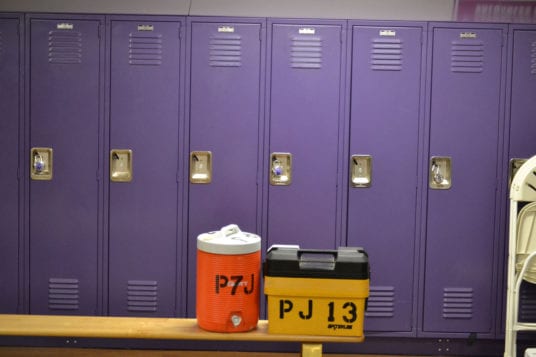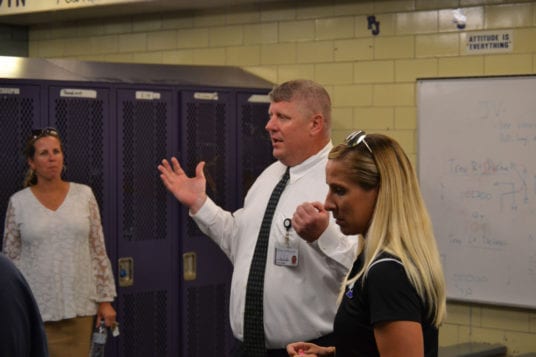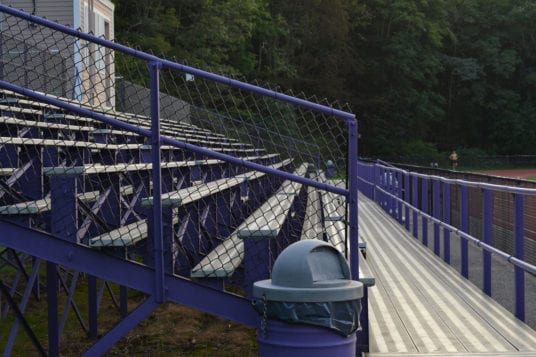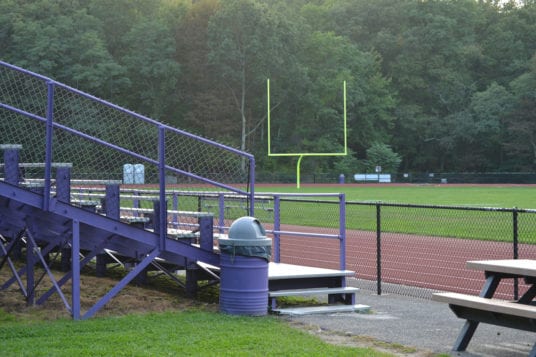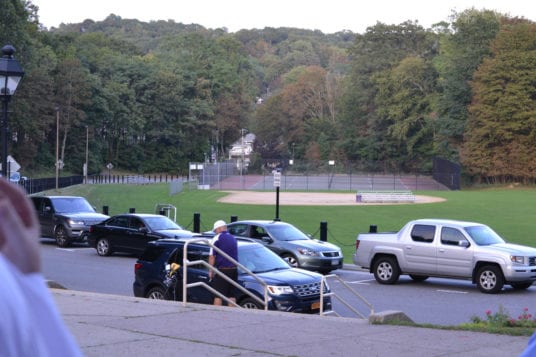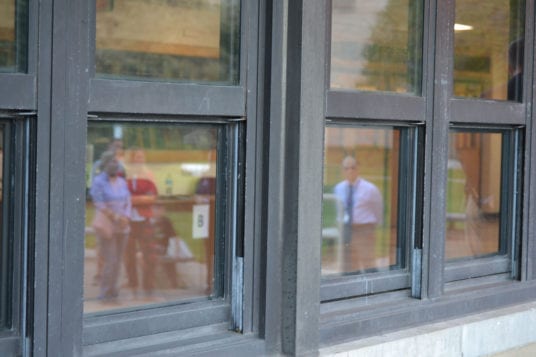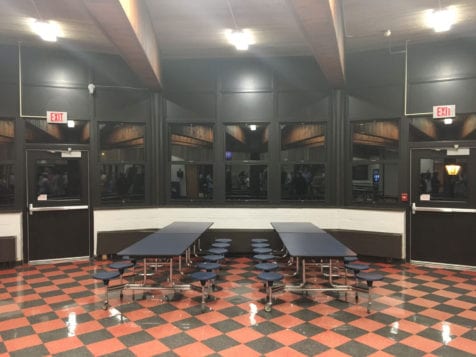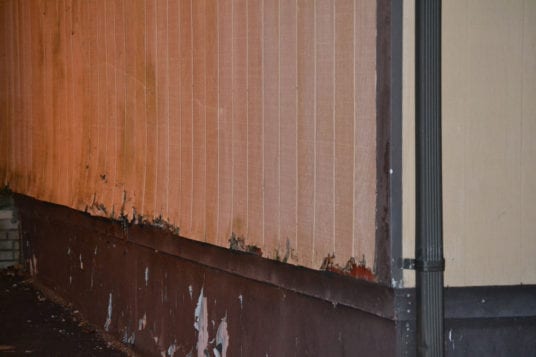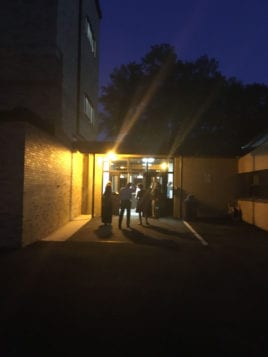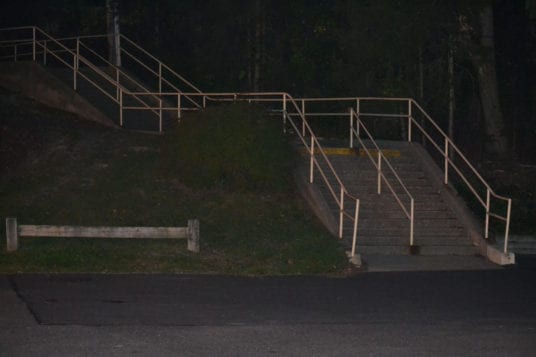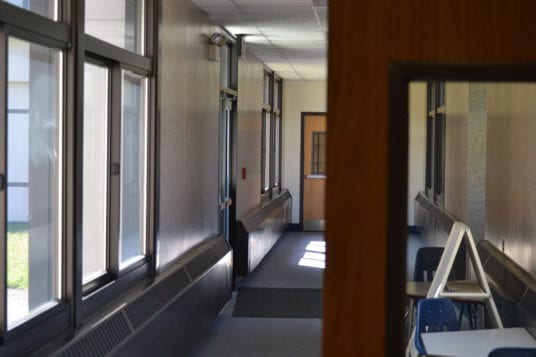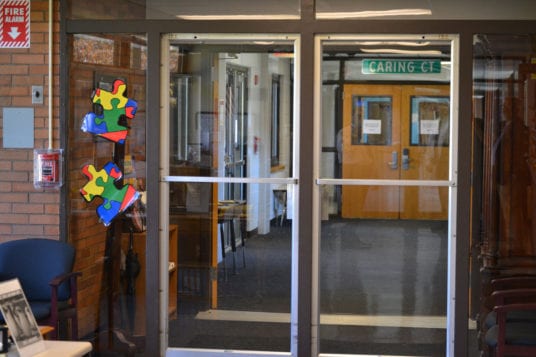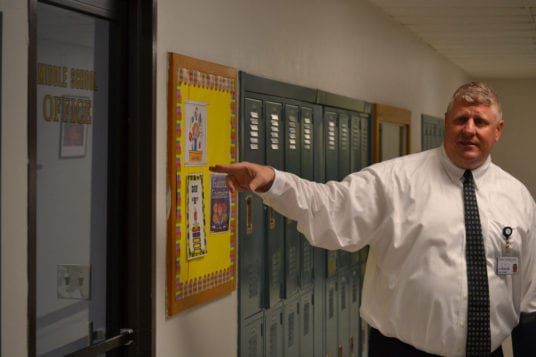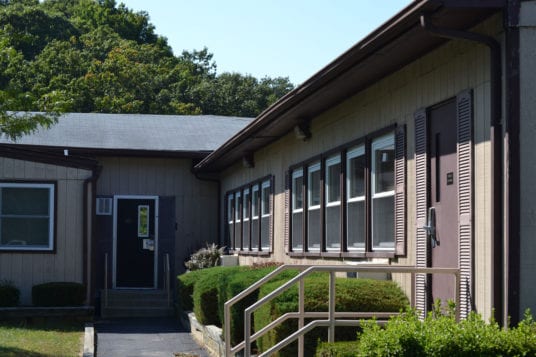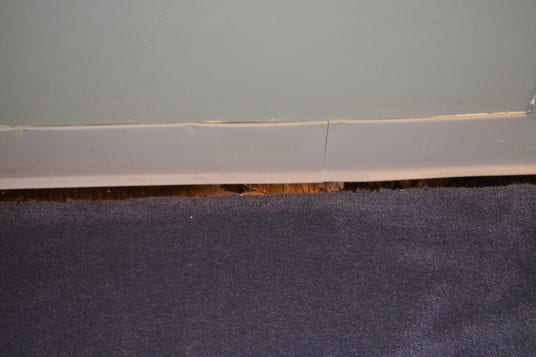PJSD holds walk-throughs to enlighten voters on $30M bond proposal
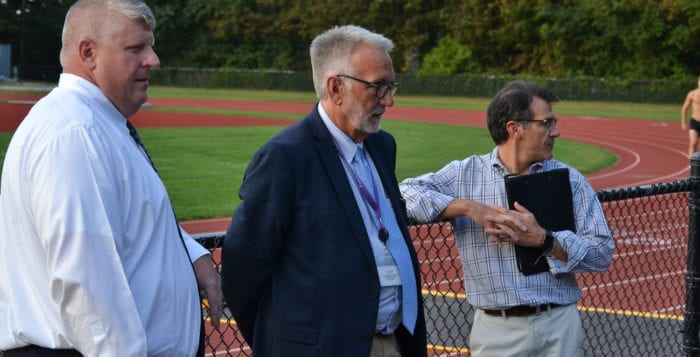
They say seeing is believing, and administrators from the Port Jefferson School District are hoping that rings true for homeowners in the district.
Paul Casciano, superintendent, Sean Leister, deputy superintendent, Danielle Turner, athletic director, principals from the three schools, architect John Grillo and other administrators took interested community members on two guided tours over the past week to examine the classrooms, hallways, buildings, grounds and athletic fields slated for renovations and repairs should a $30 million bond proposal pass a vote scheduled for Dec. 5.
Several residents have expressed concerns with committing to the 15-year payment plan with the looming possibility of a substantial loss of revenue from the Long Island Power Authority, with litigation pending against the energy provider. At least one resident who attended the high school tour said the LIPA specter might impact her vote.
“I for one, as a citizen, am concerned about what [the LIPA situation] means for our taxes, and really that’s the only reason I would say ‘no’ to this,” the resident said.
Other residents raised questions about why certain aspects of the bond, for the most part referring to upgrades associated with athletics, can’t be done during regular annual budget appropriations.
“We try and do the smaller items — when I say smaller I mean around $200,000 — through the budget process,” Leister said in response. “But for a capital project you’re talking millions, and that’s much harder to add to the budget. It would cause a big spike in the tax rate.”
Casciano further explained the thinking behind presenting the bond, which administrators have been working on since 2015, to residents this year at the end of the high school tour.
“We have a responsibility to give [the residents] an opportunity to decide what they want to do given their budget, given their beliefs, and everything else,” he said. “If they’re not supportive of it, we get that, but if we don’t give them the opportunity then I wonder if we’re fulfilling our responsibility to do what we’re supposed to do.”
A tour of Edna Louise Spear Elementary School and the adjacent district offices was held Sept. 20. Around seven Port Jeff residents attended the first walk-through, according to social media posts by at least one attendee on a private Facebook group comprised of a few thousand villagers.
Following the Sept. 20 tour and public comments made by the Port Jefferson Village Board in opposition of pursuing permission to borrow the money, members both in favor and against the bond referendum have taken to the group page to publicly state their case. Perhaps as a result of the warming debate over virtual avenues, about 30 people attended the physical tour of the high school and middle school Sept. 25.
A common refrain from district administration since the topic was introduced in depth during a Sept. 12 board of education meeting is that the projects designated in the bond proposal are too urgent and too expensive to address within standard annual budget appropriations or with an unappropriated reserve fund. The district currently has about $1.5 million in unappropriated surplus, according to Leister. State law allows districts to keep up to 4 percent of its total budget in reserves to be used on unforeseen expenses.
About $5.9 million of the proposed project would go toward upgrades associated with athletics, with the largest sticker price belonging to the replacement of the grass varsity football field with a turf surface.
“We’re a small school but we run a very full athletic program,” Turner said. Overuse of the grass high school football field has resulted in the football and lacrosse teams needing to relocate for practices, on occasion, and even for some games during the last calendar year. A turf field and lights at the athletic fields on Scraggy Hill Road would alleviate crowding issues with sports practices, according to Turner.
Upgrades at the adjoining high school and middle school building would cost $13.6 million and $2.2 million, respectively. The construction of a three-story addition to the high school building would add up to six brand new classrooms at a cost exceeding $7 million.
“We want to make sure that the kids have every opportunity to expand programs, to expand course offerings and space is something that we need,” said Christine Austen, the high school principal. She added she understands the decision is ultimately up to the community.
Fixes at the elementary school would total nearly $4 million, and the adjoining district office portable building would be demolished and relocated to the grounds of the high school at a total cost of $4.3 million.
The elementary school elements of the proposal include fresh air ventilators for 12 classrooms in the building’s 200 and 300 wings. It would also include the construction of two new classrooms to be used by the guidance department and resource room teachers, who currently are periodically educating some students in a hallway, according to Tom Meehan, elementary school principal.
“With these improvements everyone would have a home — we wouldn’t be juggling,” Meehan said.
Casciano said there is a possibility the board of education will decide to split the referendum into multiple propositions, rather than an “all or nothing” vote, though it would not be more than two propositions. If passed, the upgrades would cost a taxpayer who pays $8,000 annually in school taxes to pay an additional $396 annually.
A public meeting regarding the bond is scheduled for Oct. 2 at the elementary school in the board of education meeting room at 7 p.m.

